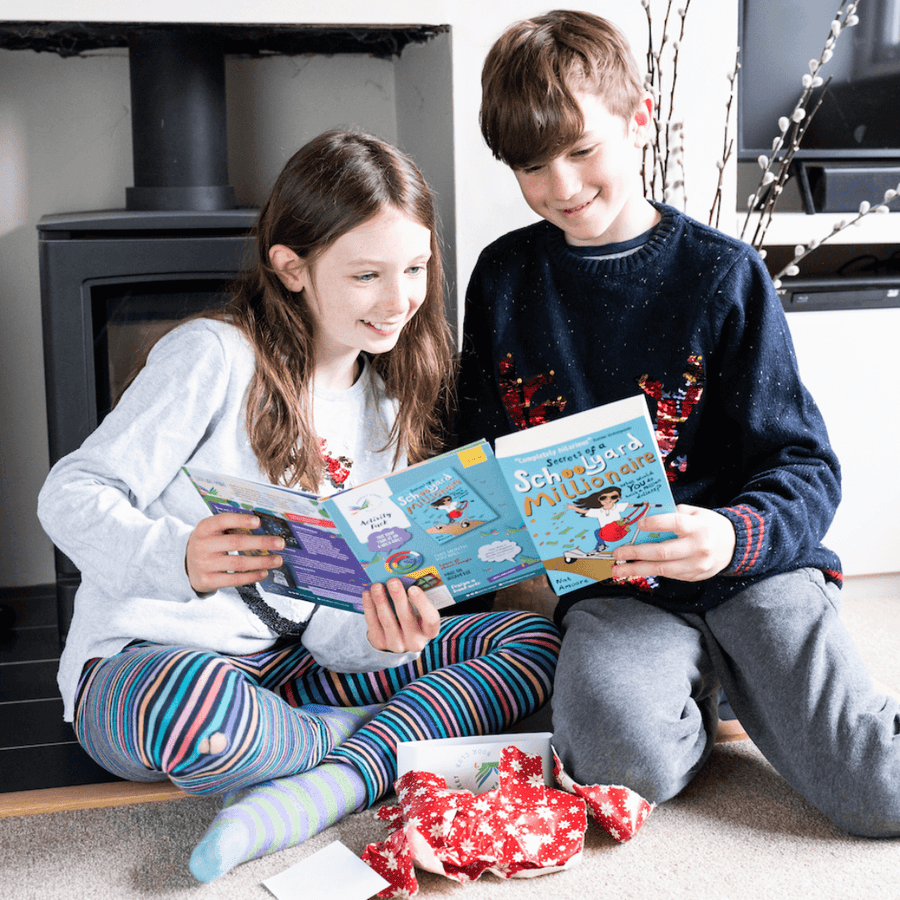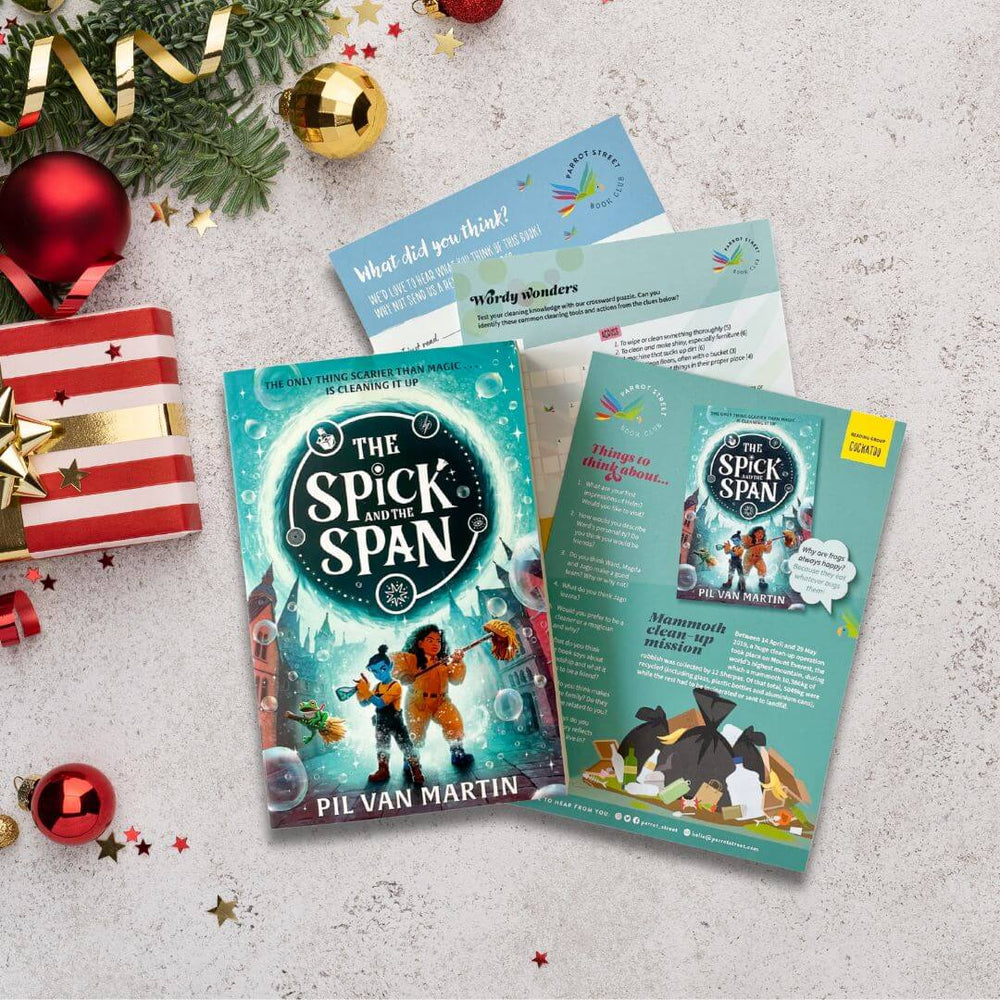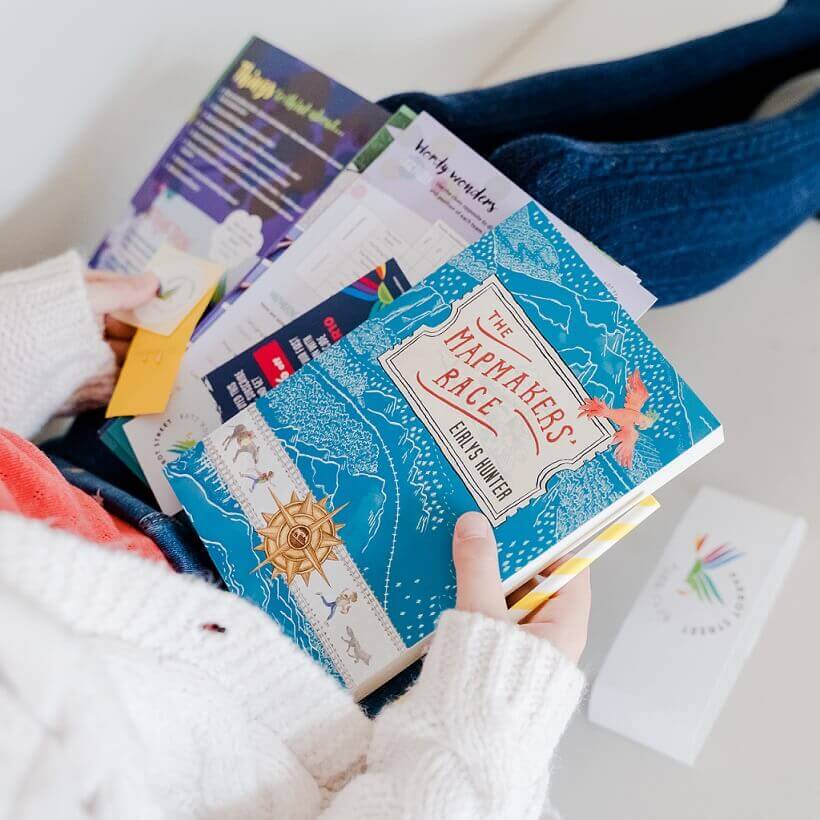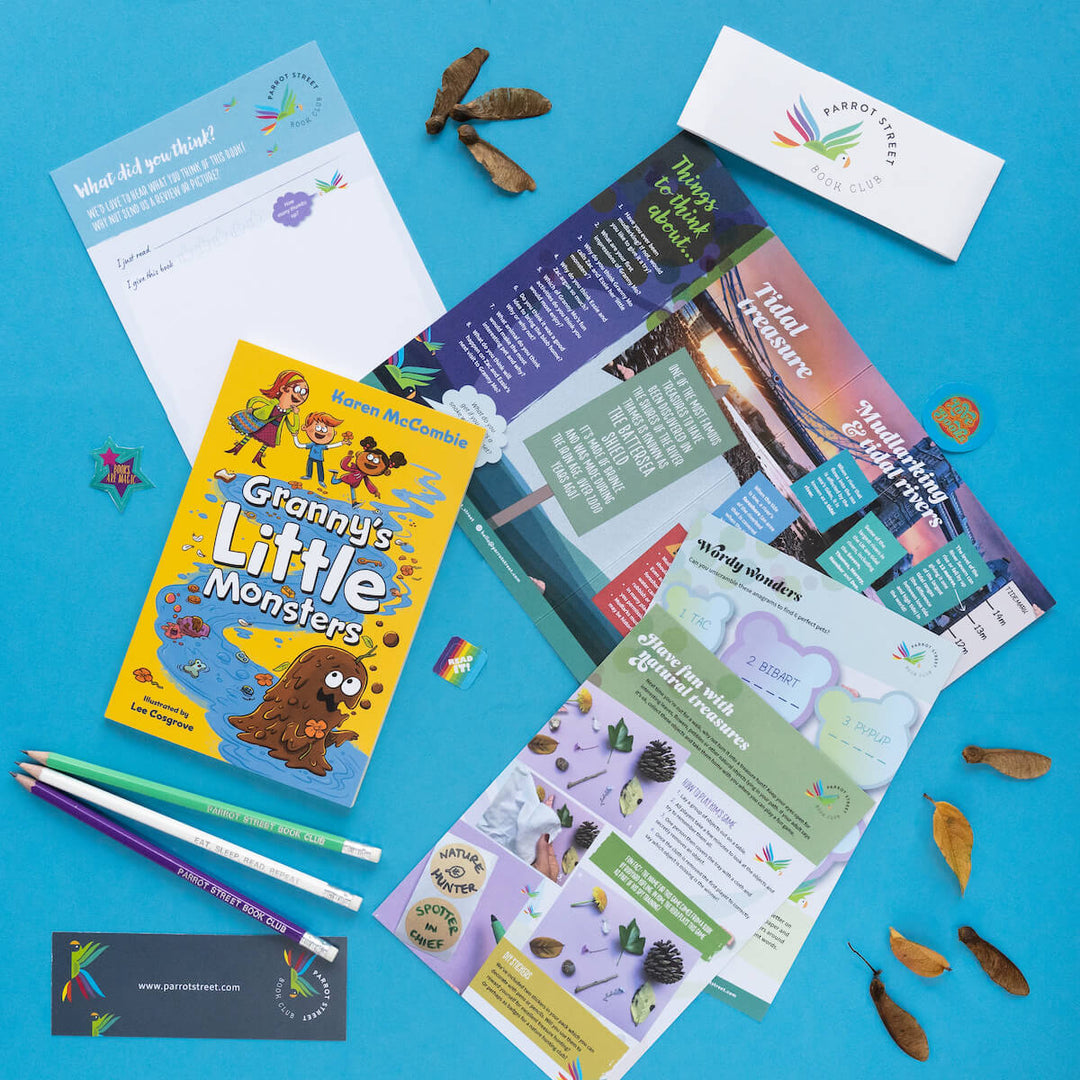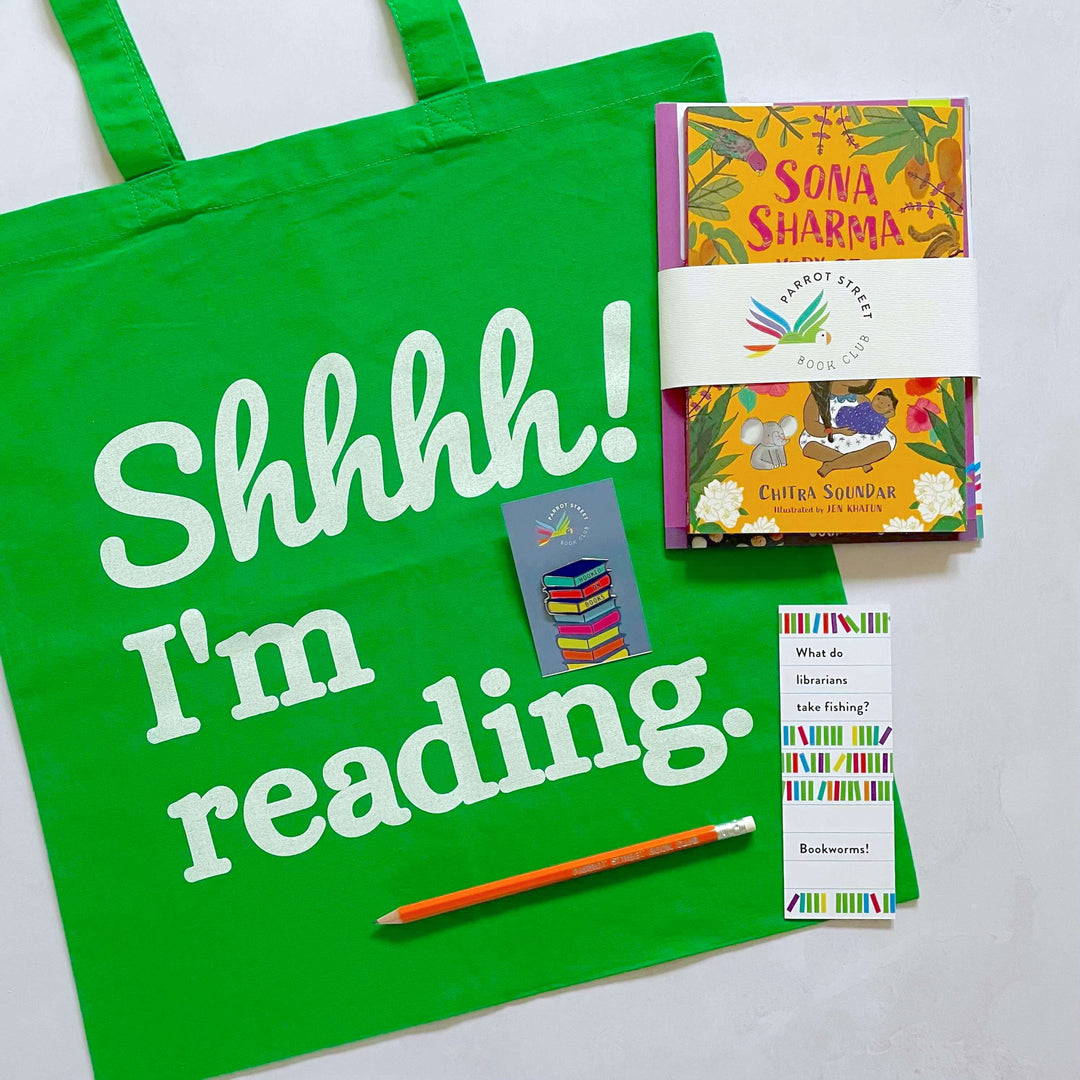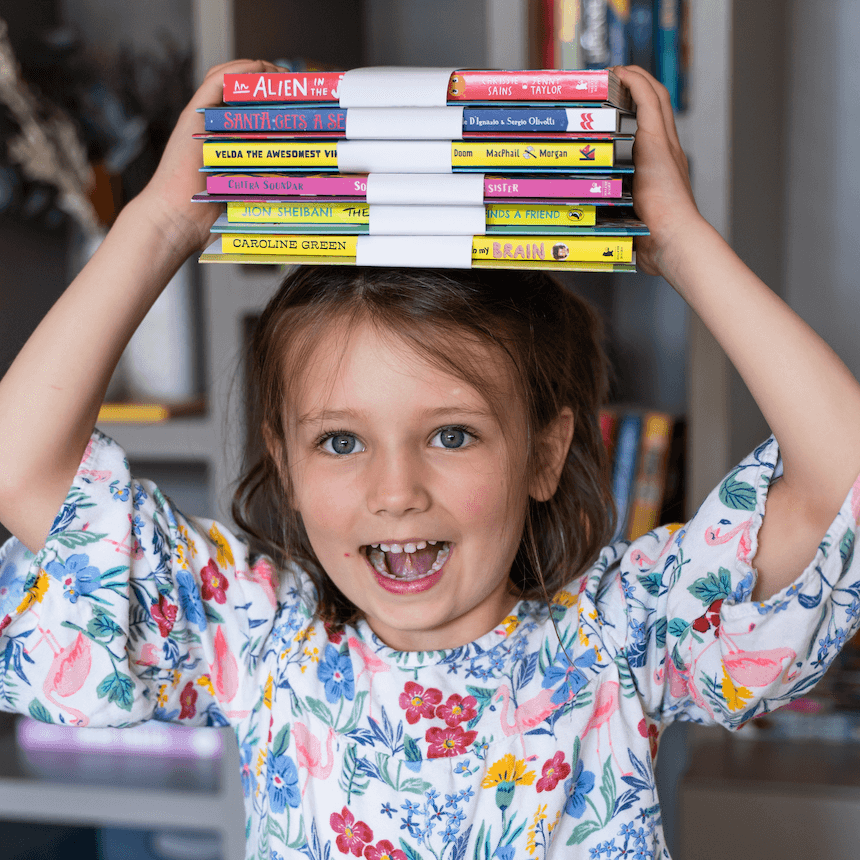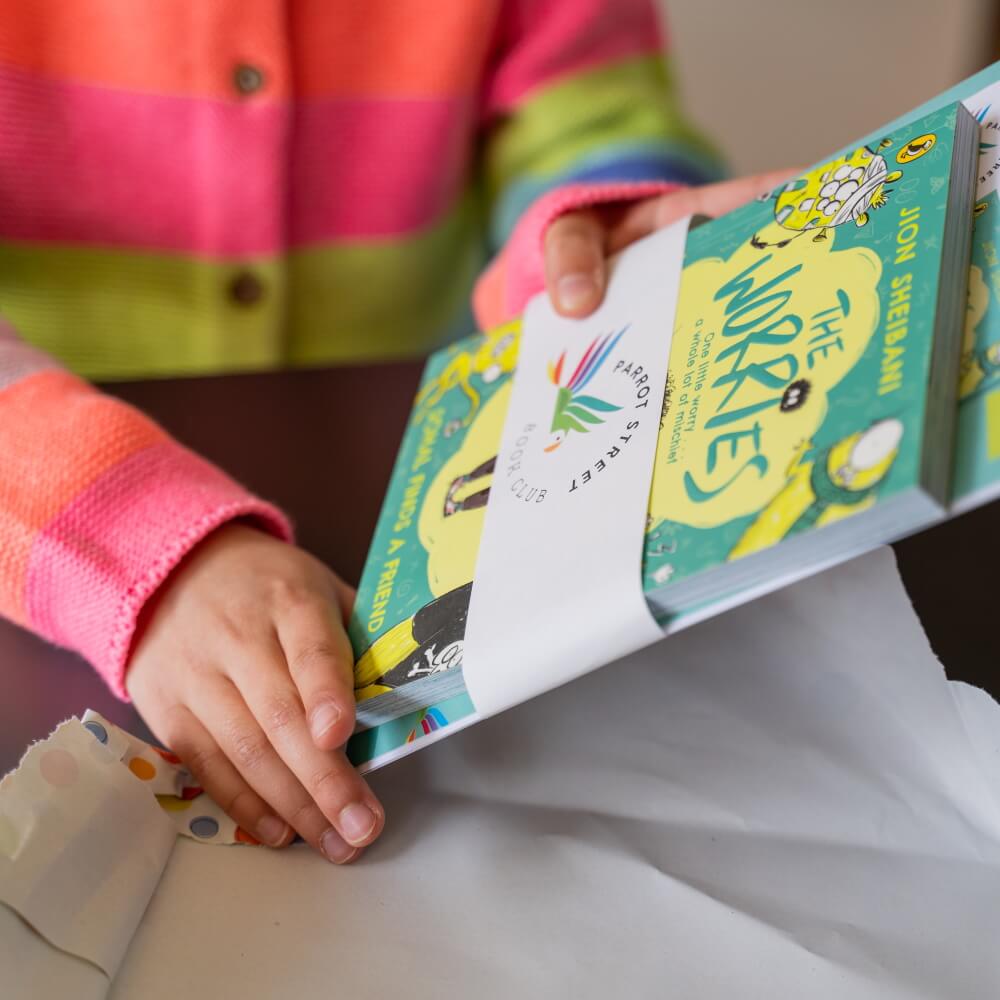Pil Van Martin on The Spick and the Span and fantasy books for kids

We're delighted to share a behind-the-scenes Q&A with Pil Van Martin, author of this month's Cockatoo read, The Spick and the Span—a wildly imaginative, laugh-out-loud middle grade fantasy perfect for fans of Nevermoor, Harry Potter, and Terry Pratchett’s Discworld. Set in the magic-saturated city of Helm, where everyday objects transform in alarming (and hilarious) ways, this unmissable debut follows twelve-year-old cleaner Ward on a quest involving monster attacks, vanishing friends, and near-impossible tests from the prestigious League of Cleaners. Pil talks about the inspirations behind this enchanting new release, their favourite characters to write, and what readers can expect next in the Spick and Span series.
What inspired you to write The Spick and the Span?
Like with all ideas for a book, it wasn’t one thing but many many things! I really resonate with Philip Pullman’s description of authors being like magpies: stealing things from other stories (or indeed, nests) to make something new. The biggest idea I stole for this book was from another fantasy author, Robin McKinley. Her retelling of Sleeping Beauty is called Spindle’s End, and it starts like this: “The magic in that country was so thick and tenacious that it settled over the land like chalk-dust and over floors and shelves like slightly sticky plaster dust. (Housecleaners in that country earned unusually good wages.)” I’d read it a few times, but during one re-reading I suddenly sat up and thought why has no one written a book about magical cleaners yet? Because although the first bit of Spindle’s End talks quite a bit about the fairies of the land who are hired for a bit of domestic cleaning, it doesn’t do much more with the idea. I was so intrigued by it, I started a story of my own. I tried to make it as funny as Spindle’s End is and, on the subject of humour, I took great globs of inspiration from Terry Pratchett, whose humour is dry, witty and almost always very kind.
I also really love LAIKA studio’s animated films and I wanted to write a story that felt like it could easily fit in to the ones they’d already created like Paranorman or the Boxtrolls or Kubo and the Two Strings. I had also just watched the beautiful animation Over The Garden Wall and I was so impressed with the story, which felt both familiar and new – like an old fairytale with all new heroes and villains and morals and fables woven in. Ward, got his name because it was the closest I could get to Wirt, the name of the protagonist of Over the Garden Wall.
Which character was the most fun to write and why?
I think Magda was probably the most fun for me to write about. I like all types of characters but my favourite is always the pragmatic, sensible one – I think because I have for a long time been resigned to the fact that if I were in an adventure story I would also be the pragmatic, sensible one. As a kid, my favourites were characters like Susan from Narnia, Tiffany Aching from Discworld, Cassie in Animorphs, Kel in Protector of the Small and, hard to get away from, Hermione in Harry Potter. I tried to give Magda a bit of each of these characters: to be pragmatic and sensible with this edge of don’t-mess-with-me, which is why she’s a warrior from a world that is so swarmed by monsters you have to fight a few dozen of them just to go to the loo. I also decided early on that Magda should be plus-sized, as there is a lack of diverse body representation in fiction. I've always wanted to see more plus-sized characters as action heroes, ever since I saw Melissa McCarthy’s hilarious action film Spy.
What do you think is the most valuable lesson Jago learns?
Jago comes from a very privileged place in Helm’s society and he’s suddenly mixing with the people who are suffering because of what magicians like him do every day without thinking about it, even if they haven’t set out to cause any harm. I think that’s an important lesson for him to learn, and the other one (which I think is probably harder for him to wrap his head around) is to be a softer, nicer person. It’s very difficult to like someone who thinks they’re right about everything and doesn’t know how to concede to other people’s points of view – we’re all guilty of doing this sometimes, so I think it’s a shame we can’t all be turned into frogs and made to work as magical cleaners until we see the error of our ways.
Would you prefer to be a cleaner or a magician and why?
I am very good at cleaning – I used to do it as a job – so I would fit right in to The Spick and Span agency. I genuinely enjoy cleaning – even horrible jobs like cleaning the toilet or emptying the compost bin in the middle of summer when it’s covered in fruit fly grubs! I think knowing how to clean properly is as important a life skill as being able to make friends or being able to read – it’s such an amazingly underrated skill. If I clean my room, I feel like my mind is clean as well. If I do the cleaning job no one wants to do, I almost always get a lot of praise and respect. If I clean up someone else’s space, it’s a tiny act of love.
Can you tell us anything about what the future holds for Ward and the inhabitants of Helm?
Yes! The next Spick and Span story is going to be big. Lots of new characters, lots of new settings and much bigger stakes than book one. We’re going to see more of Magda’s world and watch her fight monsters. We’ll catch up with Ward and Jago and get to see the inside of Helm library, which is literally built around a sleeping dragon. We’ll find out more about how magic works and what it costs, and we’ll also see more accidental transformations.
Do you have a favourite place to write?
I can write anywhere, but the best way to stop myself getting distracted is with auditory deprivation so I’ve got quite a few pairs of headphones to aid in that! On the go, I use earplugs and a headset which plays noise into your cheekbones (it’s MAD how well it works). At home, I usually have a big pair of noise cancelling headphones on. I do listen to music but more often than not I just listen to white/brown noise playlists on Spotify. My absolute favourite noise to listen to is the sound of a bath being filled up, but basically any sound where water is moving - rain, streams, rivers, oceans – all of those are lovely.
Why did you choose to write books for this age group?
I don’t find age categories very helpful to think about to be honest. As a bookseller, I’ve found that guiding kids to the right book for them is more about how confident they are at reading than about content and I have to confess that the person I’m trying to entertain when I’m writing – more than anyone – is myself. I do read a lot of books that are categorised as being mainly for kids though so maybe that is what has brought me more in that direction. I do think that children’s literature is often the most explorative and thoughtful and – especially when writing fantasy – there’s a great freedom to do whatever you want without having to over-explain how everything works.
Which other fantasy books for kids would you recommend our subscribers read next?
I’ll limit myself to 9 because it’s my favourite number and I’ll do three MG, three YA and three adult because despite not finding age categories very helpful, I appreciate that other people do!
MG: The Elemental Detectives by Patrice Lawrence: a magical London with big, crackling, interesting world building and gorgeous characters – it's a little Diana Wynne Jones, a little Studio Ghibli, a little nothing like anything you’ve read before. The Wind Singer by William Nicholson: dystopian adventure that feels wonky and strange and marvellous in its tone and scope. The Murderer’s Ape by Jakob Wegelius: a properly traditional adventure story with an amazing protagonist and soulful storytelling.
YA: Protector of the Small Quartet by Tamora Pierce: this is cheating, because it’s four books, but I would urge (with borderline fanatical zeal) anyone who wants more female knights into reading this front to back every year. Tamora Pierce’s best? Maybe? (And remember what I was saying about pragmatic, sensible characters?) The Scorpio Races by Maggie Stiefvater: probably one of the best YA books ever by one of the best authors ever. Akata Woman by Nnedi Okorafor: mind-blowingly brilliant from the characters to the world to the use of language. Nnedi Okorafor is a genius.
ADULT: Uprooted by Naomi Novik: still my favourite fantasy book in the world ever. The Last Unicorn by Peter S Beagle: This isn’t necessarily adult, it’s one of those books you can read a thousand times and still find something new in it the next time you read it and even more so if you read it first as a kid and then as a teen and then as a young adult and then as an adult etc. For me, this is the quintessential fantasy book, more so than Lord of the Rings. A lightning in a bottle magic trick of a book. Finally, Nettle and Bone by T Kingfisher is one of those books that understands tropes and fairytale conventions in a way that so few fantasy authors seem to do, and the story here is original, complicated and absolutely next level.
Copies of our The Spick and the Span pack, including a copy of the book and loads of fun activities to go with it, are now available for individual purchase. Grab a copy while stocks last!
This post includes affiliate links to our bookshop.org page, meaning we receive a small percentage of the sale should you purchase through them. Additionally, a percentage from all sales on the platform goes directly to local UK bookshops which is an initiative we're delighted to support!
JOIN OUR EMAIL LIST
Children's book news straight to your inbox
We love sharing product updates, book recommendations, children's activity ideas and special offers via email.



